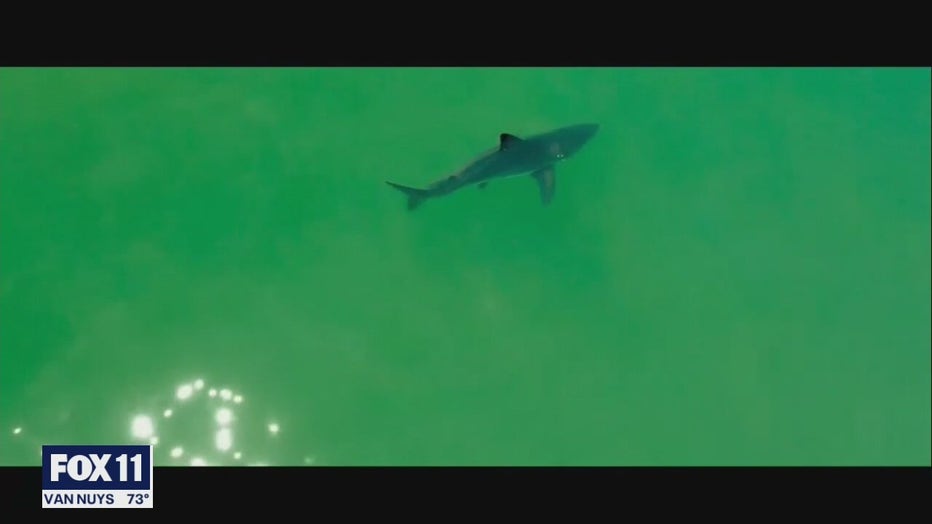Drone footage of white sharks suggests we may see more off California Coast
LONG BEACH, Calif. - Incredible drone images of white sharks off the California coast show that they are more numerous, and closer to the beach, than many imagined.
"I can see as many as a dozen in one afternoon," says Carlos Gauna, aka The Malibu Artist, whose YouTube channel features incredible images of white sharks that he has compiling for years.
What started as a personal passion is helping researchers at Cal State Long Beach’s renowned Shark Lab, where they have been tracking sharks, particularly the Great Whites, for a few years.
Lab Director Dr. Chris Lowe says the images are helpful because they include them in the compilations of their own drone videos, and information from other tools to map out where the sharks are going and where they are having closer encounters with people.
Researchers say they are trying to figure out the following:
- Over the last five years, CA lifeguards have reported a five-fold increase in great white shark sightings.
- The number of juvenile whites, which love the murky shallows to spend their initial years, are getting closer to people.
- Most encounters don’t result in bytes, or attacks, especially when people don’t notice the animals, or don’t react to them by splashing or trying to get close to them.
- The aggregations seem to be moving. In 2015, lots of sharks were seen in the Long Beach area. Dana Point was the hot spot in 2017, but 2019 saw them moving North, towards Santa Barbara. San Diego was more popular in 2020. This year, they seem to be returning to the so-called shark nurseries commonly seen in the Monterey Peninsula.
Get your top stories delivered daily! Sign up for FOX 11’s Fast 5 newsletter. And, get breaking news alerts in the FOX 11 News app. Download for iOS or Android.

The information is vital, and videos like Carlos’s are helpful in many levels.
For example, one of them shows a curious, large white approaching kayakers, who realize it is there because of Carlos’ drone. The three kayaks bunch up together, with one of the people pointing the kayak directly at the shark, while staying far, and – more importantly -- quiet. All arms stay in, no paddling to scare the shark away.
"Exacrly what you need to do" says Dr. Lowe. The point of the kayak tells the shark its "nose" is on the animal, and it’s being watched. It moves away without an issue.
Look at the images in our piece. For more, go to the Malibu Artist YouTube channel.
Those with videos of recent shark sightings off the California coast are asked to pass them along to CSULB's shark lab.
You’ll be helping their research, and perhaps keeping both the humans and sharks safer.


